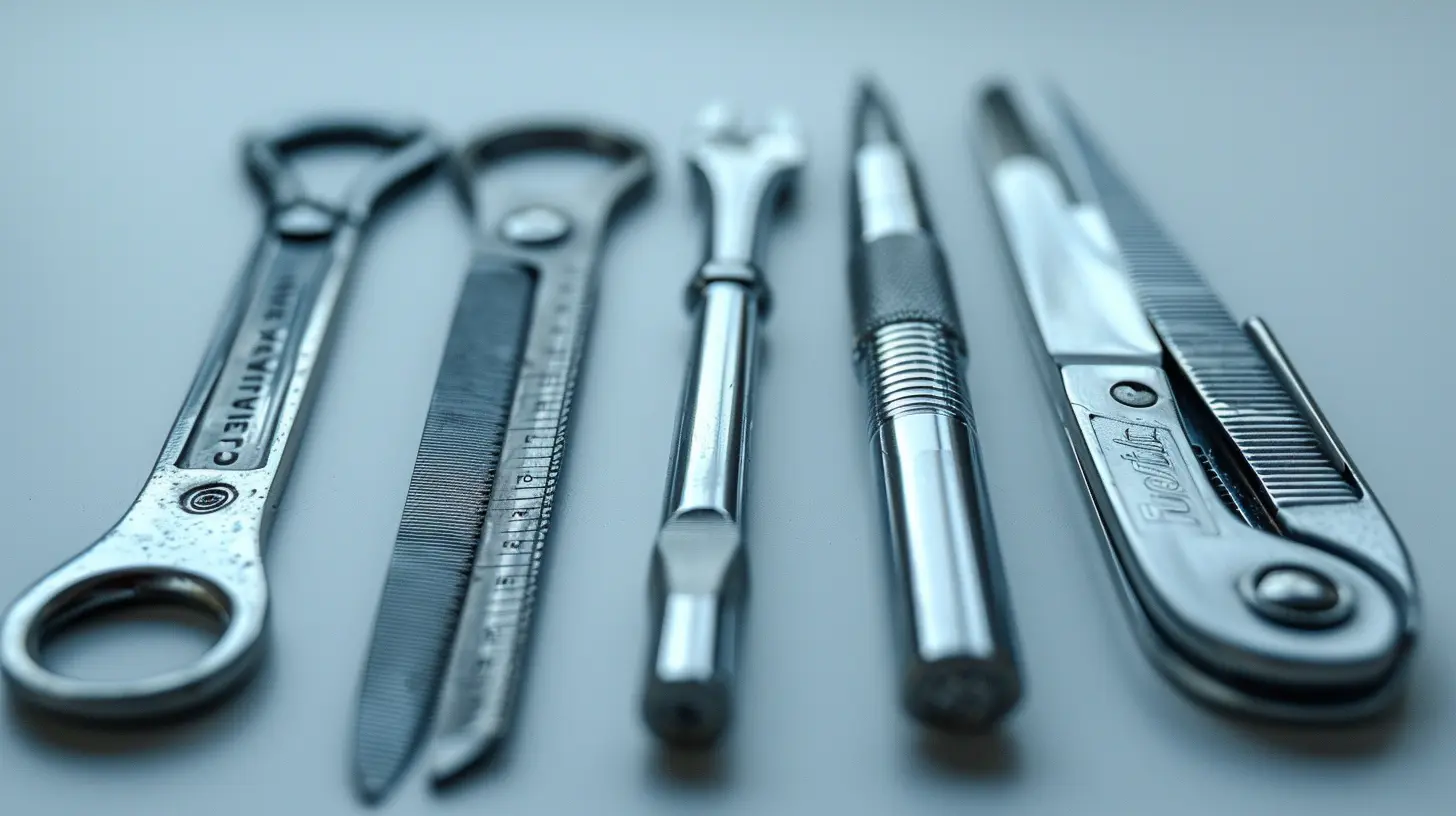Tips for Budgeting with a New Job or Career Change
18 November 2025
Starting a new job or switching careers is exciting. It feels like a fresh chapter—you might be earning a bit more, maybe working in a totally different field, or perhaps just feeling more fulfilled. But with change comes responsibility, especially when it comes to your money.
Let’s face it: getting a new paycheck doesn’t mean you suddenly have it all figured out financially. Whether your income has gone up, down, or stayed the same, your budget will need a reboot. So, how do you keep your finances in check during this life shift?
In this guide, we’ll break down realistic, practical ways to budget smartly with your shiny new job or career path.
Why a New Job Means a New Budget
Here’s the thing—your spending and saving habits are (or should be) tied to what’s hitting your bank account. When that changes, your budget should too. A new job can mean:- A different salary (higher or lower)
- New benefits (hello health insurance or 401(k) matching!)
- Changes in commuting costs
- New wardrobe needs (especially if you ditched sweats for suits)
- Relocation expenses or remote work perks
So before you fall into old money habits, it’s time to take a hard look at your financial picture.
1. Pause and Reassess Your Financial Priorities
First things first: take a deep breath. Don’t start spending like you’ve won the lottery (unless you actually did, in which case, carry on... wisely).Changing your job is a great moment to hit reset on your financial goals. Ask yourself:
- What matters most now?
- Are you trying to pay off student loans faster?
- Saving for a house or emergency fund?
- Want to travel more without piling on credit card debt?
When you know what you’re working toward, budgeting becomes a tool—not a chore.
🔑 Pro Tip: Write down your top three financial goals and pin them somewhere visible. It keeps you grounded when Instagram tempts you with another “treat yourself” splurge.
2. Understand Your New Income (The Real One)
I hate to break it to you, but your salary isn’t really your salary.You might be earning $60K a year now, but that doesn’t mean you’re pocketing $5,000 a month. After taxes, retirement contributions, health insurance deductions, and other withholdings, your take-home pay could be much less.
Before planning how to spend your money, figure out how much is actually landing in your bank account.
✔️ Check your pay stub or use an online paycheck calculator.
✔️ Note if you're paid monthly, bi-weekly, or weekly—because that affects your budgeting rhythm.
3. Track Every Penny (Yes, Every One)
Now that you know what’s coming in, it’s time to figure out what’s going out.Start by tracking your spending for 30 days. You’ll be surprised how quickly “little things” add up—$5 lattes, $10 subscriptions, $25 on takeout because you were “too tired to cook.”
Use budgeting apps like Mint, YNAB (You Need A Budget), or even a simple spreadsheet to track expenses. The goal isn’t to shame yourself—it’s about facing your habits honestly.
💡 Think of it like checking the weather before picking your outfit—it just makes sense.
4. Use the 50/30/20 Rule (or Customize It)
A super simple way to build a budget is the 50/30/20 rule. Here’s how it breaks down:- 50% of your take-home pay goes to needs (housing, groceries, bills)
- 30% goes to wants (dining out, entertainment, shopping)
- 20% goes to savings and debt payments
Of course, this formula isn’t one-size-fits-all, especially if you’re in a high-cost city or aggressively paying off debt. But it’s a solid starting point. Adjust as needed based on your personal situation.
🎯 Your budget should feel like a well-fitting pair of jeans—not too tight, not too loose.
5. Build (or Rebuild) Your Emergency Fund
Changing careers isn’t just about the present—it’s about preparing for the unexpected. Even with a new job, things can go sideways (layoffs, unexpected expenses, or a change of heart about your new role).That’s why an emergency fund is crucial. Aim for 3 to 6 months of basic living expenses saved up in a separate high-yield savings account.
Even if you're starting from scratch, saving $25 or $50 per paycheck adds up. Slow and steady wins the race.
6. Don’t Inflate Your Lifestyle (Yet)
Have you heard of “lifestyle creep”? It’s when you start earning more—and suddenly think you deserve to spend more.Don’t get me wrong, you’ve earned a little treat (I see you eyeing that espresso machine). But be careful not to let your spending rise just because your paycheck did.
Try “banking the raise.” That means living like you did before and stashing the extra cash into savings, investments, or debt payments.
📈 Think of it as giving your future self a raise, too.
7. Revisit Your Debt Strategy
A new job is a great time to look at your debt game plan. Are you just making minimum payments? Could you put a bit more toward those balances? Maybe refinance?Here’s what to consider:
- Student loans: Do you qualify for forgiveness or income-driven repayment?
- Credit cards: Focus on high-interest ones first.
- Car or personal loans: Can you round up payments or refinance at a better rate?
Clearing debt is like removing weights from your financial backpack—it helps you move faster toward your goals.
8. Get Serious About Retirement (Even If It Feels Far Away)
If your new job offers a retirement plan like a 401(k), don’t pass it up. Especially if there’s an employer match—hello, free money!Aim to contribute at least enough to get the full match. Over time, you can increase your contributions (1% more per year adds up big-time).
Self-employed or freelancing now? Look into a Roth IRA or Solo 401(k). Retirement may feel lightyears away, but future-you will be glad you started early.
9. Automate What You Can
Let’s be real: life gets busy, and no one wants to remember every due date or savings goal.That’s where automation is your best bud. Set up automatic transfers:
- From your checking to savings on payday
- Toward retirement accounts
- For bill payments and credit cards
The less mental load you have, the easier it is to stick with your budget.
🤖 Automation: because you don’t need another thing on your to-do list.
10. Check on Your Benefits
New job = new perks. Are you taking advantage of them?Review your benefits package closely. Some overlooked gems might include:
- Health Savings Accounts (HSAs)
- Commuter benefits
- Tuition reimbursement
- Employee discounts
- Mental health or wellness stipends
These can save you money and improve your quality of life—win-win.
11. Keep a Side Hustle Mentality (Even If You Don’t Need It)
Just because you’ve got a new gig doesn’t mean you can’t diversify your income a bit.Whether it's freelancing, tutoring, or selling that epic banana bread recipe online, having a side hustle adds cushion to your budget.
It’s also a safety net if something doesn’t go as planned with your job or you want to explore entrepreneurship later on.
👣 Think of it as planting seeds for future growth.
12. Review Your Budget Monthly
Budgets aren’t “set it and forget it.” Life changes—so should your budget. Schedule a 15-minute date with your finances each month.Ask yourself:
- Did I overspend? Why?
- Is my savings on track?
- Are there any upcoming big expenses?
Little check-ins prevent big problems down the road.
Final Thoughts
Budgeting isn’t about restriction—it’s about intention. When you start a new job or shift your career, it’s a golden opportunity to realign your money with what actually matters to you.Sure, it takes a little effort upfront, but once you've got it rolling, budgeting becomes second nature. It’s like giving your dollars a job so you can enjoy the life you’re building—without the stress.
So grab a coffee, crack open that spreadsheet or budgeting app, and start mapping out your new financial journey. You’ve got this.
all images in this post were generated using AI tools
Category:
Budgeting TipsAuthor:

Angelica Montgomery

